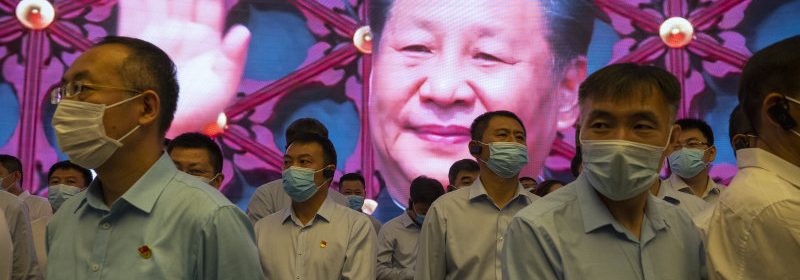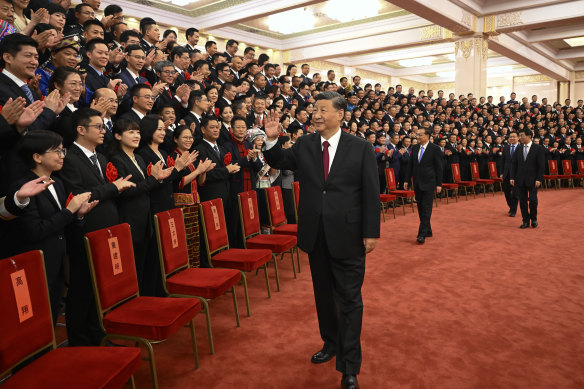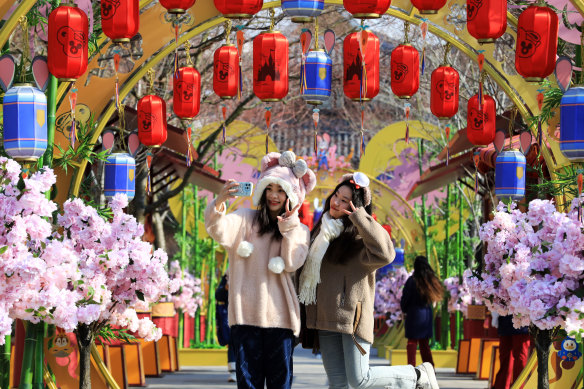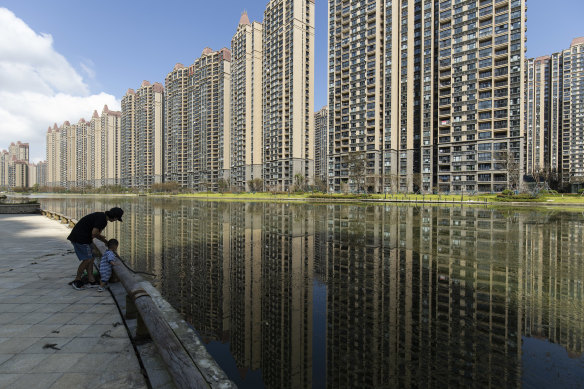China’s economy is roaring again but Xi could get in the way

After its weakest growth in decades last year China’s economy has come roaring back, with its manufacturing sector expanding at its fastest pace for a decade. With Xi Jinping moving to tighten the Communist Party’s grip on the economy, however, there is a question mark over the sustainability of the recovery.
The latest official manufacturing sector purchasing managers’ index (PMI) reached 52.6 in February, a significant lift from January’s 50.1 reading and the highest reading since April 2012. A reading above 50 indicates expansion; one below 50 is a contraction.
Chinese President Xi Jinping’s decision to exit its harsh COVID-zero policies is paying off but there could be trouble on the horizon. Credit:AP
The extent of the improvement in manufacturing activity – a separate survey of small and largely private businesses also reflected expansion, with the Caixin manufacturing PMI up from 49.2 in January to 51.6 – signals that Xi’s decision to abandon China’s harsh approach to COVID late last year is paying off.
While COVID infections did surge after the policy was ditched, fears that the freedom to travel during the Lunar New Year holiday period would result in massive outbreaks of the virus appear to have been unfounded, positioning the economy for a big rebound from the anaemic (by China’s standards) three per cent growth in GDP last year.
The factory-level data follows signs that the deep slump in China’s property market may have bottomed out, with new home sales by the country’s top 100 developers rising 14.9 per cent in February for the first year-on-year growth since mid-2021.
The sector, a key component of the economy, has experienced a massive liquidity crisis over the past 18 months, with big developers defaulting on their debts, projects left half-built and apartment buyers left with mortgages but no apartments.
Actions taken by Beijing and by local government authorities reliant on property-related income for much of their funding to shore up and stimulate property sector activity appears to be producing results, although the sector remains fragile. The superficially strong February data came after a near-32 per cent slump in sales in January.
The broader economic data is more robust. The PMI data shows new orders expanding at their highest level for more than five years, export orders growing at their fastest rate for more than a decade and manufacturing employment increasing for the first time in two years.
In many respects, the economic rebound was predictable, and not just because of the lifting of the COVID restrictions and their impact on factory and leisure activity, transport and travel.
Beyond the “base effects” – the comparison with last year’s depressed numbers – China’s authorities have injected liquidity into the financial system, lowered interest rates, provided multi-layered assistance to the property sector and resorted to their traditional ploy of stimulus via infrastructure investment, albeit not on the same scale as the measures taken after the 2008 financial crisis.
Fears that the freedom to travel during the Lunar New Year holiday period would result in massive outbreaks of the virus appear to have been unfounded.Credit:Getty
The International Monetary Fund last month raised its forecast for China’s GDP growth this year by 0.8 percentage points to 5.2 per cent.
In the wake of the PMI data private sector economists now think the economy could grow as much as 6 per cent although, like the IMF (which thinks GDP growth will slow to less than 4 per cent within five years) they also see this year as a post-COVID bounce that will lose momentum next year.
The data will, however, encourage China’s leadership to reconsider their own expectations of growth this year, with this weekend’s National Peoples’ Congress thought likely to set a GDP growth rate target of 5.5 per cent to 6 per cent.
While the congress effectively just rubber stamps decisions taken by the Communist Party leadership, which essentially means by Xi, the upcoming meeting is being asked to endorse a major shift in policies, with the party tightening its grip on the economy.
In a speech this week Xi foreshadowed “deepening structural reform” in the financial sector, greater control over science and technology (where the US is shutting down China’s access to advanced semiconductors and other sophisticated technologies) and plans to increase “party-building work” in private companies, industry associations and chambers of commerce.
Xi said the looming round of “reforms” were expected to have a major impact on China’s economic and social development.
If the experience of the past two years is any guide, giving the party more control over China’s private enterprises will have profound effects, albeit not necessarily positive ones.
It was Xi’s signature policies, the “three red lines” policy (since relaxed) on property sector leverage that precipitated the meltdown of the major developers and a crisis in a sector that accounts for more than a third of China’s GDP and his crackdown on technology companies (since slightly relaxed) that saw billions, if not trillions, of dollars of value wiped from China’s biggest and most successful technology entrepreneurs.
China’s crippling property crisis may have bottomed out. Credit:Bloomberg
A broader intrusion into the private sector by the party isn’t going to improve the dynamism of the most dynamic segment of the economy. The productivity of China’s state-owned enterprises is a fraction of that of its private sector companies.
Tightening the grip on the sector is the antithesis of the prescription Western economists would write for the country’s economic strategies, although Xi has also called for the need to make state-owned entities operate according to market mechanisms, whatever that might mean in practice within an economy that appears likely to be increasingly managed by party officials rather than the broader state.
In the longer term with a declining population, high levels of debt and poor industry productivity, China’s growth rate is destined to slow again. In the near term, the bounce back from COVID-driven lows should persist for at least the first half of this year, and possibly beyond, despite slowing global growth and the increased tensions with the US and its allies.
That’s good news for Australia’s iron ore, coal and LNG producers but not necessarily for global inflation rates. Oil prices kicked up on the release of the PMIs.
China’s subdued demand had helped Europe avoid a severe energy crisis as it pivoted away from Russian energy in the wake of the invasion of Ukraine.
In a tight market for energy, the re-emergence of China’s demand has implications for Europe’s ability to continue to access energy at something less than prohibitive costs which, in turn, has implications for global energy prices, global growth and global inflation rates.
The Business Briefing newsletter delivers major stories, exclusive coverage and expert opinion. Sign up to get it every weekday morning.
Most Viewed in Business
From our partners
Source: Read Full Article



